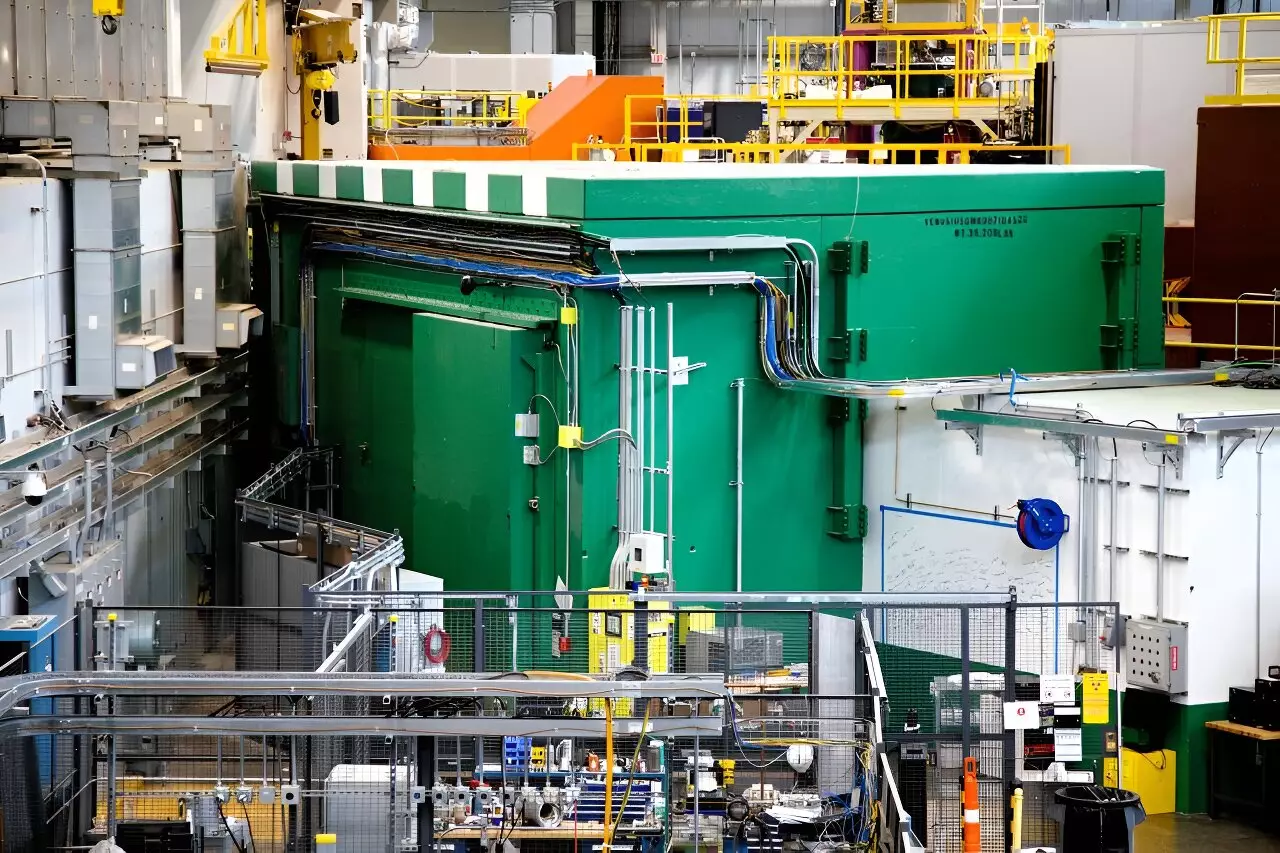The Oak Ridge National Laboratory (ORNL), under the auspices of the U.S. Department of Energy, has earned recognition for its pioneering advancements in neutron scattering technology. One of its most groundbreaking recent achievements is the introduction of the Versatile Neutron Imaging Instrument, known as VENUS. This sophisticated addition at the Spallation Neutron Source marks a significant step forward in the realm of neutron imaging, leveraging artificial intelligence to enhance research capabilities. The official commissioning of VENUS, greenlit by the DOE’s Office of Science, isn’t just a milestone for ORNL; it represents a transformative shift for numerous scientific fields reliant on advanced imaging techniques.
The journey towards VENUS has its roots in a 2006 vision conceived by Hassina Bilheux, a leading neutron scattering scientist at ORNL. Bilheux envisioned a tool that would provide researchers with an unprecedented ability to analyze crystalline and amorphous materials without compromising their integrity. Her work has culminated in an instrument that not only excels in resolution but also minimizes damage to delicate samples, a feat valuable in contexts ranging from planetary science to materials engineering.
Perhaps the most notable aspect of VENUS is its capacity to create high-resolution, three-dimensional images, offering insights into atomic structures without subjecting them to the rigorous stress that traditional imaging methods often impose. This is crucial for studies of fragile samples, such as moon rocks collected during NASA’s Apollo missions, which require intricate imaging to unlock secrets of planetary formation and the availability of water resources on extraterrestrial bodies.
What sets VENUS apart is its integration of advanced computational methods and artificial intelligence. Traditionally, creating accurate 3D models of inspected samples was a time-consuming endeavor, requiring a multitude of radiographs and waiting periods that could extend over days or weeks. VENUS aims to change this dynamic drastically. With its real-time, intelligent algorithms, scientists can now generate data sets rapidly, allowing them to obtain reliable 3D models almost instantaneously upon completion of their experiments.
This innovative approach not only enhances efficiency in data acquisition but also enables researchers to access high-quality imaging data with unprecedented ease. Researchers can focus on their experiments without the anxious anticipation of delayed results, thus enhancing the overall productivity of their projects. Such efficiency is vital when tackling global challenges—from energy storage solutions that improve battery technologies to agricultural innovations fostering drought-resistant crops.
VENUS also represents a strategic move for the United States in the realm of neutron imaging research. Jens Dilling, the associate laboratory director for ORNL’s Neutron Sciences Directorate, has articulated that this state-of-the-art facility positions the U.S. favorably within the international scientific community. In an age where global collaboration and competition coexist, having a premier research facility capable of cutting-edge imaging capabilities could catalyze advancements across various scientific fields.
The capacity for VENUS to provide unique imaging contrasts contributes significantly to its multifaceted application scope, drawing the attention of researchers from diverse disciplines. Bilheux notes the collective ambition behind this project, emphasizing it as a collaborative effort supported by a dedicated team of scientists committed to innovation in neutron imaging.
The development of VENUS has not been an isolated endeavor. ORNL has partnered with leading institutions, including Brookhaven National Laboratory and Purdue University, to harness the latest advancements in AI and data acquisition techniques. These collaborations have led to the establishment of algorithms that form the groundwork upon which VENUS’s functionalities are built. These partnerships embody a spirit of cooperation that strengthens the scientific community, ultimately pushing the boundaries of what is technologically possible.
As the instrument nears completion, anticipation builds around its capacity to reshape the future of research. While construction for VENUS commenced in 2019, its journey lingered through the pandemic, affording team members the opportunity to refine its design. Plans for a user beamtime launch in the latter half of 2025 offer a glimpse into the potential that VENUS holds for researchers eager to delve into the intricacies of both new and established materials.
The introduction of VENUS at ORNL heralds a transformative chapter in neutron imaging and materials science. With its potent combination of high-resolution 3D imaging capability and real-time data processing through AI, VENUS is set to enhance scientific understanding in a myriad of fields. As researchers begin to harness its full potential in the coming years, one can only anticipate the far-reaching implications for scientific discovery and innovation—evidence that the future of research is indeed bright at Oak Ridge National Laboratory.


Leave a Reply